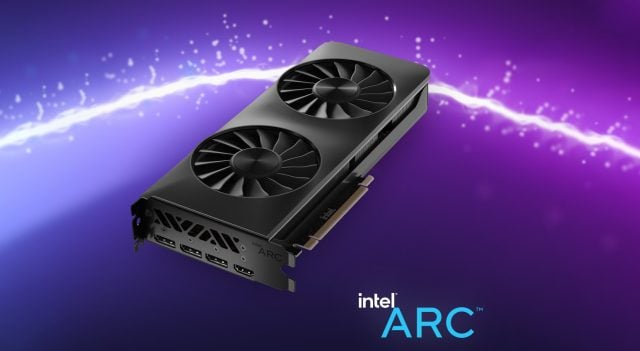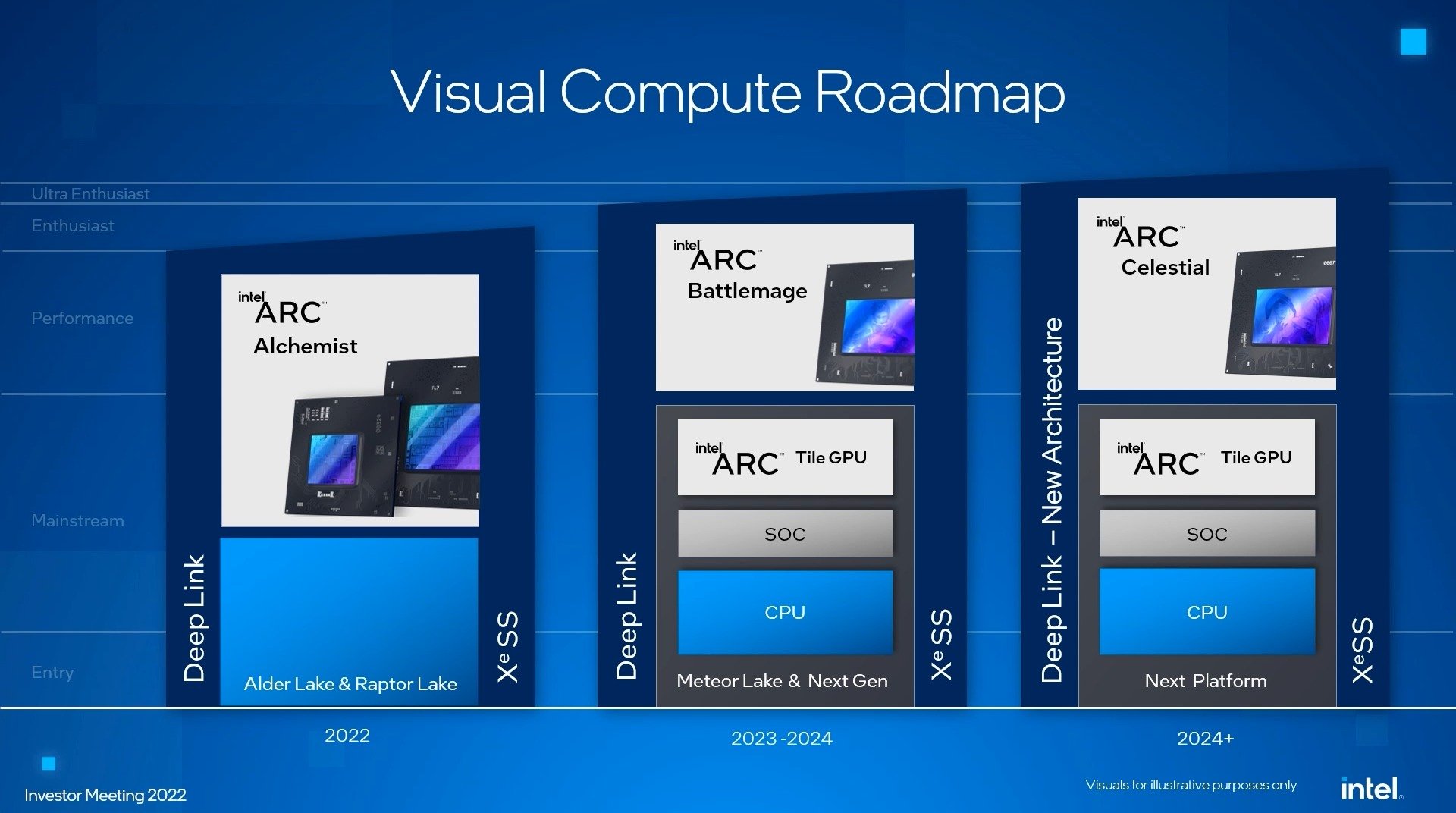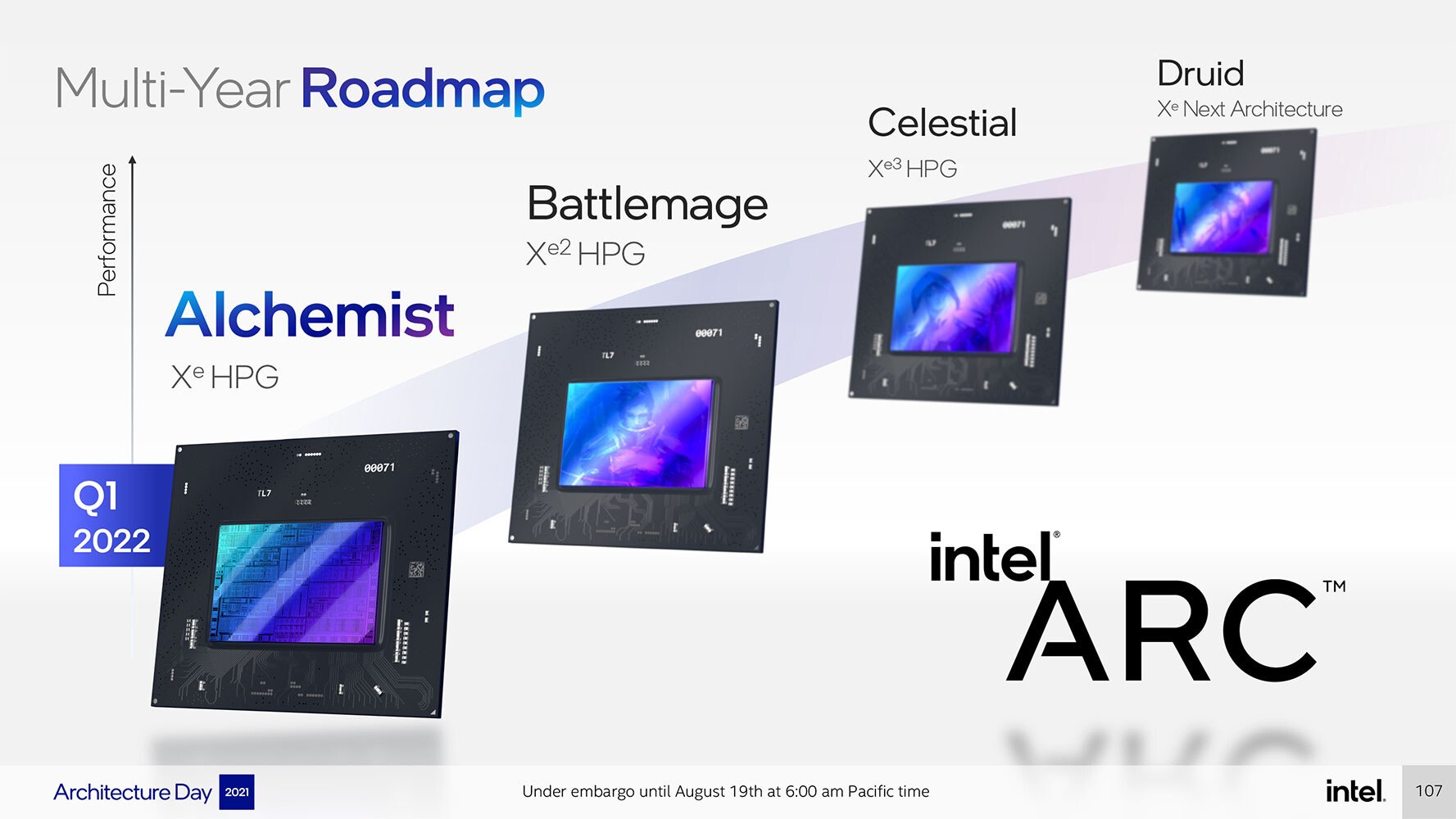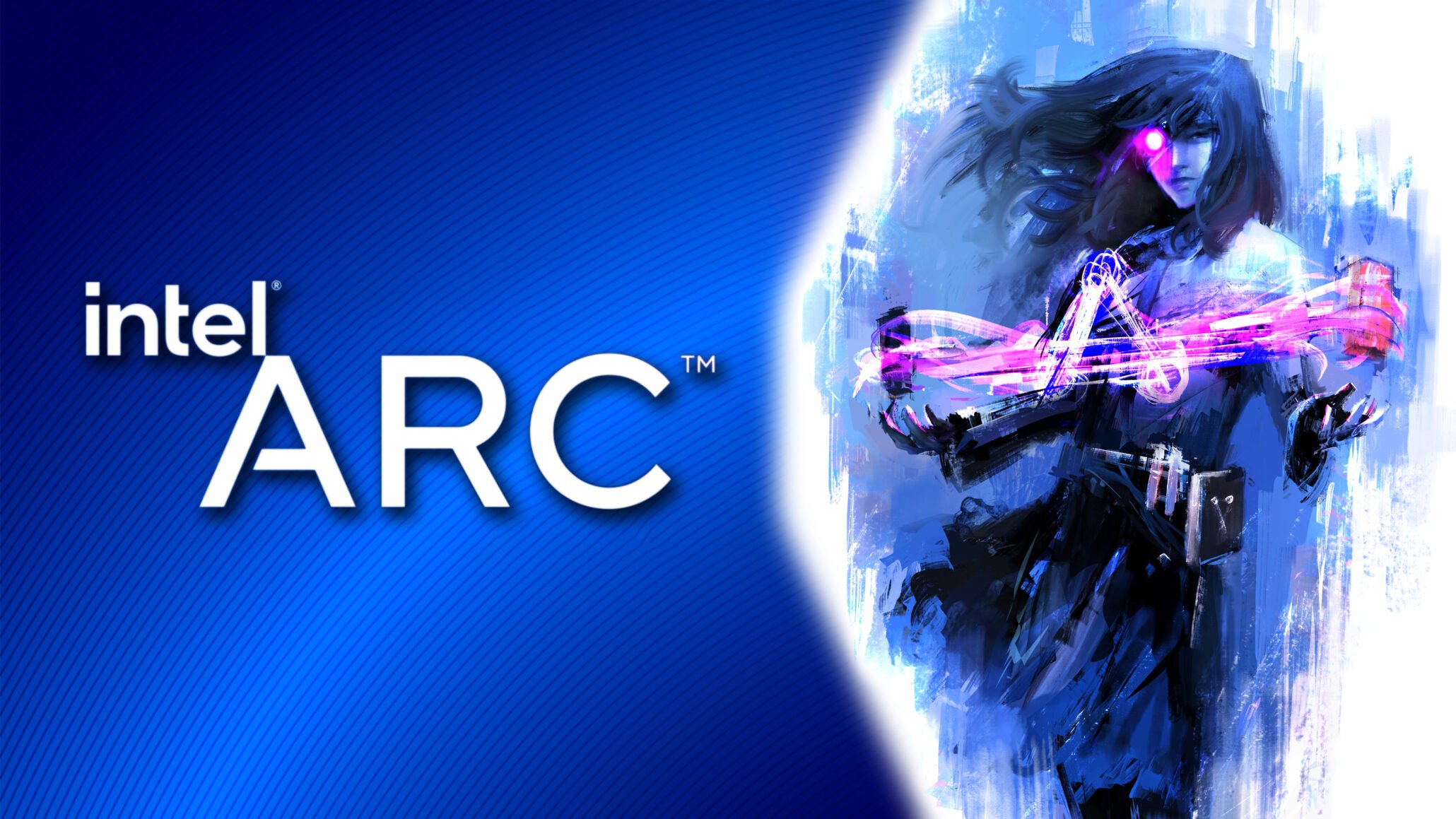Intel’s New Trump card Battlemage: Release Date, Features and All Known

Some may remember that Intel’s entry into the external GPU arena was quite problematic. Graphics cards codenamed “Arc Alchemist” were released with a delay. Aside from its limited release, we have seen compatibility and software issues from time to time. During this time, the blue team got some things back on track, corrected mistakes and gained a lot of experience. Now, they are developing “Battlemage” graphics cards by taking advantage of all these experiences.
Let us remind you that the Arc A750 and Arc A770 models compete with NVIDIA cards such as GeForce RTX 3060 and GeForce RTX 3060 Ti. It was also stated that these cards were more powerful than the AMD Radeon RX 6650 XT. Over time, the performance of Arc A-Series cards has increased and many optimizations have been made.

We can say that Intel, which targets low-mid budget PC gamers, has proven itself as an important player in gaming cards. To summarize simply, the blue team started its adventure to compete with the middle class. More powerful GPUs are now next: All eyes are on the series codenamed Battlemage.
Although we know that Battlemage GPUs are coming, there is no official information. But now we will bring together the information we have obtained so far.
Expected Features of Intel Battlemage Series
Intel hasn’t said anything about Battlemage GPUs yet. According to some leak sources, the flagship model would come with 64 Xe Cores. So what does this number mean? We’re talking about twice as much Xe-Core as the Arc A770 currently on the market. If we include other improvements, aside from just the number of cores, we expect the new cards to be much more powerful.
Initially, 64 Xe-Core was mentioned, but leak sources later revised this figure to 56 Xe-Core. If this is the case, performance will drop slightly, but we will still see a big performance jump compared to current models. In addition, the GPUs are claimed to reach clock speeds of up to 3 GHz and come with massive 112 MB L2 cache units.

There’s something more remarkable: Adamantine cache. In other words, Intel plans to offer extra cache capacity similar to AMD’s 3D V-Cache technology. Essentially, the extra cache integrated on the chip will contribute significantly to performance. We can also call this “Level 4” cache. If rumors are to be believed, the blue guys are planning to place a massive 512 MB Adamantine cache on the flagship graphics card.
Besides the flagship offering 56 Xe Cores, a separate model powered by 40 Xe-Core is also mentioned. The amount of cache memory and frequency speed of this card may also be low. It looks like Intel is working on two main models for Battlemage, similar to Alchemist. Afterwards, we may see more different models being released.
Additionally, recent leaks mentioned that Intel was working on two new Battlemage GPUs known as Battlemage-G10 and Battlemage-G21. Let’s say that the Battlemage-G10 is the more powerful chip, but it is not the flagship model with 56 Xe-Core. It is said that G10 will come to the mid-level market, while G21 will appeal to entry-level systems.
Neither Battlemage-G10 nor Battlemage-G21 has been finalized yet as G21 is said to be in the pre-qualification stage. At this stage, the functionality, reliability and performance of the chip are tested. So even if the tests take place, it is not ready for mass production. On the other hand, if these prequalification tests are successful and the GPUs meet the necessary criteria in terms of performance, power and efficiency, they can be put into mass production. The fate of Battlemage-G10 is not fully known.
Intel Xe2-HPG and Xe2-LPG Architecture
Intel calls the architecture behind Battlemage Xe2, following the Xe architecture we see in Alchemist graphics cards. Leakers have shared a few details about what this next-gen architecture will include, but we don’t have much in the way of concrete details.
For Battlemage, Intel says it has simplified its series. The company designed its initial Xe architecture to scale from low-power laptops to data center GPUs. Intel’s Tom Petersen says that Xe2 will have a more modern lineup. There will be Xe2-LPG for low-power applications and Xe2-HPG for high-performance external GPUs.

According to a leaked internal slide shared by RedGamingTech, Xe2-HPG will feature “next-generation memory subsystem and compression,” as well as advanced ray tracing and microarchitectural improvements. This first note attracts attention. Last year, Intel published a research paper detailing AI-driven compression to overcome VRAM issues in modern games. We may see this technology used as part of the Battlemage architecture.
Tom Petersen gave important details about future architectures in an exclusive interview. Petersen said that the Xe2 graphics series, codenamed “Battlemage”, will be offered in LPG and HPG versions, and these versions will be optimized for integrated and discrete GPUs. So Intel will stick to the Xe2-LPG and Xe2-HPG microarchitectures in its GPUs codenamed Battlemage. It is still unclear whether Xe2-HPC is planned. However, Intel’s next-generation HPC GPU, codenamed Realto Bridge, is officially based on ‘Enhanced Xe-HPC’ cores, not Xe2-HPC cores.
4nm Manufacturing Technology
Intel does not produce GPUs for Arc cards, although it has its own semiconductor foundries. Instead they use TSMC’s foundries like AMD and NVIDIA. TSMC will remain Intel’s preferred foundry for Battlemage, but what really matters is which production line it will use.
There is consensus in the rumor world that Intel will use a variant of N4 (4nm), the high-performance line in TSMC’s 5nm portfolio. As the NVIDIA RTX 4000 series has proven, with the right engineering skills, it can be used to produce chips that are small, efficient and capable of high clock speeds.
There isn’t much difference between TSMC’s N5 and N4 technologies in terms of how many transistors can be packed into a given area. N4 offers 11% more performance and is vastly superior to N6 in every aspect.
It was brought to the agenda by industry sources that TSMC received very large production orders from Intel. Arc Alchemist GPUs currently on sale are produced with TSMC 6nm production technology. In addition, Intel will apparently have TSMC produce both Battlemage and Celestial architecture graphics processors.
Second generation Battlemage graphics cards with Xe2 architecture will most likely be built on TSMC 4nm production technology. The Celestial series, which is expected years later, will benefit from 3nm processes.
Possible Release Date
The first generation of Arc Alchemist GPUs were released in 2022, with a slow process taking several quarters. Even if the promotion was made, it was difficult to find the products in the market at first. This negatively affected sales figures and adoption. The company does not want to repeat the same mistake with the second generation Arc Battlemage products and plans to introduce the cards before the critical holiday season this year.
According to leaks, Intel is considering releasing the next generation Arc ‘Battlemage’ graphics processors in autumn 2024 and releasing them by November at the latest. In this way, they will capture the shopping events that start around Black Friday and increase sales. This timing will allow Intel to take advantage of the lucrative holiday shopping season, which is a critical sales period in the retail calendar, especially in the United States.
As you can imagine, promotion and sales do not happen overnight. The company has a timeline and they need to work with their production partners. According to rumors, sales will need to start in November at the latest before Intel partners can ramp up production of graphics cards and ship the products to retailers around the world. The official launch will take place before November.
Unless Intel makes a sudden surprise, we expect Battlemage cards to appear in the second half of 2024. At the beginning of the year, Intel’s Tom Petersen said that engineers on the graphics team were working on software for the next generation of GPUs, and that hardware engineers were already “taking it to the next level.” Battlemage is ready to go, at least on the hardware front. However, leak sources disagree with this timeline. Citing Intel sources, Moore’s Law is Dead claims that Battlemage is targeted for release in late 2024 or early 2025.
The blue team has a keynote presentation at Computex, which will take place in June this year. Battlemage can take the stage at that important event.
Which Models May Come?
We do not know how many different models will initially come with the new series. Intel needs to plan well. NVIDIA’s Blackwell-based RTX 5000 series and AMD’s RDNA 4-supported RX 8000 series may also arrive before the end of the year. Therefore, Battlemage must have attractions that will attract users’ attention. Performance, price and everything…
Even if it is not a rival to expensive flagships such as RTX 4090-5090, it is now likely that the blue people will raise the bar to the top. We have been saying this for a long time. Perhaps rival models to the RTX 4080-5080 series can be introduced. If competing GPUs do not arrive, we at least expect rival models to the RTX 4070-5070 series.
Performance
Unfortunately, we have no information about the performance of the Battlemage family. However, as we said, the top-end model, the RTX 4080, will probably compete with the minimum RTX 4070 series. Intel probably won’t be able to compete with the next generation of powerful GPUs from AMD and NVIDIA. Instead, competitive models will be offered in the middle-upper segment, as with the Alchemist series. There are many cards in the $400-$600 range. With the RTX 5000 and RX 8000, the number of these cards will increase even more.
Price
There is no data on pricing either. Considering the features we know, the flagship model can be expected to cost around $500-550. Either way, we’re expecting an expensive card from the current Arc A770 16GB model. The weaker model that follows will naturally be cheaper.
By the way, let’s make a note: Although the current Arc Alchemist series launched with a certain list price, it received serious discounts over time. Intel’s next-generation cards will likely be significantly higher. However, the numbers are related to the expected GPU architecture changes and Intel’s preferences.
In summary, the new generation cards will probably have much more cores, cache, and higher clock speeds than the Alchemist models. The price will also be proportionately more expensive.
Intel’s Tests Have Already Begun
Intel organized a tour called “Intel Tech Tour” with various people from the media in September 2023. In this round, non-public information about the company’s next generation technologies was given. One of the products discovered at the Intel Technology Tour was the next generation Battlemage GPU: BGM-G10.
Participating in the Technology Tour HardwareLuxxfound an Intel BMG G10 wafer in the Error Analysis Lab. As you can imagine, media were not allowed to take photos or videos.
8K Support
Firstly Phoronix New information was obtained in Intel’s Linux graphics drivers detected by. Right at the beginning of the patch notes, Intel states that the newest update “adds display support for Battlemage.” This means Intel has reached a stage where people can start preparing their PCs to use Battlemage cards once they’re released.
It was stated that the update removed support for DisplayPort v2.0 UBHR20, which comes at 20 Gbps. Intel later imposed a 13.5 Gbps limit on the card. But the 13.5 Gbps cap allows Battlemage to support uncompressed 8K video at 144 Hz, so the news isn’t all bad.
Where Do Names Like Battlemage, Celestial, Druid Come From?
The graphics card series joining the Intel Arc GPU family are named after fictional characters in various games. According to Intel, the name Alchemist was inspired by various fantasy games, including Final Fantasy XIV and Dungeons & Dragons. In these games, the Alchemist can make powerful potions from elemental herbs, elements, and other ingredients.

The blue team, which started out with the name Alchemist, will include names such as Battlemage, Celestial and Druid in its game cards based on the Xe-HPG architecture. While the Battlemage nomenclature comes from the world of Elder Scrolls, the name Celestial emerged from a mixture of various fantasies, including the last Marvel Eternals movie. Druid, on the other hand, is said to be a common character based on the fantasy RPG/RTS universe.

Their rivals NVIDIA and AMD are inspired by scientists and stars when naming their GPUs. Intel, on the other hand, prefers to use fantasy and mythological characters such as. It is very nice that they were inspired by the game in this regard.

